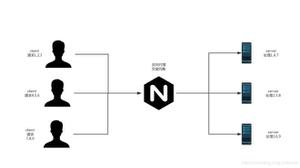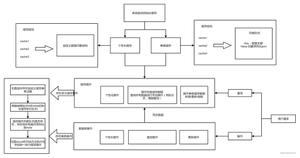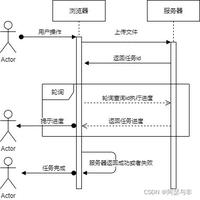SpringBoot常用注解和原理
一、启动注解 @SpringBootApplication
@Target(ElementType.TYPE)@Retention(RetentionPolicy.RUNTIME)
@Documented
@Inherited
@SpringBootConfiguration
@EnableAutoConfiguration
@ComponentScan(excludeFilters = { @Filter(type = FilterType.CUSTOM, classes = TypeExcludeFilter.class),
@Filter(type = FilterType.CUSTOM, classes = AutoConfigurationExcludeFilter.class) })
public @interface SpringBootApplication {
// ... 此处省略源码
}
查看源码可发现,@SpringBootApplication是一个复合注解,包含了@SpringBootConfiguration,@EnableAutoConfiguration,@ComponentScan这三个注解
@SpringBootConfiguration 注解,继承@Configuration注解,主要用于加载配置文件
@SpringBootConfiguration继承自@Configuration,二者功能也一致,标注当前类是配置类, 并会将当前类内声明的一个或多个以@Bean注解标记的方法的实例纳入到spring容器中,并且实例名就是方法名。
@EnableAutoConfiguration 注解,开启自动配置功能
@EnableAutoConfiguration可以帮助SpringBoot应用将所有符合条件的@Configuration配置都加载到当前SpringBoot创建并使用的IoC容器。借助于Spring框架原有的一个工具类:SpringFactoriesLoader的支持,@EnableAutoConfiguration可以智能的自动配置功效才得以大功告成
@ComponentScan 注解,主要用于组件扫描和自动装配
@ComponentScan的功能其实就是自动扫描并加载符合条件的组件或bean定义,最终将这些bean定义加载到容器中。我们可以通过basePackages等属性指定@ComponentScan自动扫描的范围,如果不指定,则默认Spring框架实现从声明@ComponentScan所在类的package进行扫描,默认情况下是不指定的,所以SpringBoot的启动类最好放在root package下。
二、Controller 相关注解
@Controller
控制器,处理http请求。
@RestController 复合注解
查看@RestController源码
@Target(ElementType.TYPE)@Retention(RetentionPolicy.RUNTIME)
@Documented
@Controller
@ResponseBody
public @interface RestController {
/**
* The value may indicate a suggestion for a logical component name,
* to be turned into a Spring bean incase of an autodetected component.
* @return the suggested component name, if any (or empty String otherwise)
* @since 4.0.1
*/
@AliasFor(annotation = Controller.class)
String value() default "";
}
从源码我们知道,@RestController注解相当于@ResponseBody+@Controller合在一起的作用,RestController使用的效果是将方法返回的对象直接在浏览器上展示成json格式.
@RequestBody
通过HttpMessageConverter读取Request Body并反序列化为Object(泛指)对象
@RequestMapping
@RequestMapping 是 Spring Web 应用程序中最常被用到的注解之一。这个注解会将 HTTP 请求映射到 MVC 和 REST 控制器的处理方法上
@GetMapping用于将HTTP get请求映射到特定处理程序的方法注解
注解简写:@RequestMapping(value = "/say",method = RequestMethod.GET)等价于:@GetMapping(value = "/say")
GetMapping源码
@Target(ElementType.METHOD)@Retention(RetentionPolicy.RUNTIME)
@Documented
@RequestMapping(method = RequestMethod.GET)
public @interface GetMapping {
//...
}
是@RequestMapping(method = RequestMethod.GET)的缩写
@PostMapping用于将HTTP post请求映射到特定处理程序的方法注解
@Target(ElementType.METHOD)@Retention(RetentionPolicy.RUNTIME)
@Documented
@RequestMapping(method = RequestMethod.POST)
public @interface PostMapping {
//...
}
是@RequestMapping(method = RequestMethod.POST)的缩写
三、取请求参数值
@PathVariable:获取url中的数据
@Controller@RequestMapping("/User")
public class HelloWorldController {
@RequestMapping("/getUser/{uid}")
public String getUser(@PathVariable("uid")Integer id, Model model) {
System.out.println("id:"+id);
return"user";
}
}
请求示例:http://localhost:8080/User/getUser/123
@RequestParam:获取请求参数的值
@Controller@RequestMapping("/User")
public class HelloWorldController {
@RequestMapping("/getUser")
public String getUser(@RequestParam("uid")Integer id, Model model) {
System.out.println("id:"+id);
return"user";
}
}
请求示例:http://localhost:8080/User/getUser?uid=123
- @RequestHeader 把Request请求header部分的值绑定到方法的参数上
- @CookieValue 把Request header中关于cookie的值绑定到方法的参数上
四、注入bean相关
@Repository
DAO层注解,DAO层中接口继承JpaRepository,需要在build.gradle中引入相关jpa的一个jar自动加载。
Repository注解源码
@Target({ElementType.TYPE})@Retention(RetentionPolicy.RUNTIME)
@Documented
@Component
public @interface Repository {
/**
* The value may indicate a suggestion for a logical component name,
* to be turned into a Spring bean incase of an autodetected component.
* @return the suggested component name, if any (or empty String otherwise)
*/
@AliasFor(annotation = Component.class)
String value() default "";
}
@Service
@Target({ElementType.TYPE})@Retention(RetentionPolicy.RUNTIME)
@Documented
@Component
public @interface Service {
/**
* The value may indicate a suggestion for a logical component name,
* to be turned into a Spring bean incase of an autodetected component.
* @return the suggested component name, if any (or empty String otherwise)
*/
@AliasFor(annotation = Component.class)
String value() default "";
}
- @Service是@Component注解的一个特例,作用在类上
- @Service注解作用域默认为单例
- 使用注解配置和类路径扫描时,被@Service注解标注的类会被Spring扫描并注册为Bean
- @Service用于标注服务层组件,表示定义一个bean
- @Service使用时没有传参数,Bean名称默认为当前类的类名,首字母小写
- @Service(“serviceBeanId”)或@Service(value=”serviceBeanId”)使用时传参数,使用value作为Bean名字
@Scope作用域注解
@Scope作用在类上和方法上,用来配置 spring bean 的作用域,它标识 bean 的作用域
@Scope源码
@Target({ElementType.TYPE, ElementType.METHOD})@Retention(RetentionPolicy.RUNTIME)
@Documented
public @interface Scope {
/**
* Alias for {@link #scopeName}.
* @see #scopeName
*/
@AliasFor("scopeName")
String value() default "";
@AliasFor("value")
String scopeName() default "";
ScopedProxyMode proxyMode() default ScopedProxyMode.DEFAULT;
}
属性介绍
valuesingleton 表示该bean是单例的。(默认)
prototype 表示该bean是多例的,即每次使用该bean时都会新建一个对象。
request 在一次http请求中,一个bean对应一个实例。
session 在一个httpSession中,一个bean对应一个实例。
proxyMode
DEFAULT 不使用代理。(默认)
NO 不使用代理,等价于DEFAULT。
INTERFACES 使用基于接口的代理(jdk dynamic proxy)。
TARGET_CLASS 使用基于类的代理(cglib)。
@Entity实体类注解
@Table(name ="数据库表名"),这个注解也注释在实体类上,对应数据库中相应的表。
@Id、@Column注解用于标注实体类中的字段,pk字段标注为@Id,其余@Column。
@Bean产生一个bean的方法
@Bean明确地指示了一种方法,产生一个bean的方法,并且交给Spring容器管理。支持别名@Bean("xx-name")
@Autowired 自动导入
- @Autowired注解作用在构造函数、方法、方法参数、类字段以及注解上
- @Autowired注解可以实现Bean的自动注入
@Component
把普通pojo实例化到spring容器中,相当于配置文件中的
虽然有了@Autowired,但是我们还是要写一堆bean的配置文件,相当麻烦,而@Component就是告诉spring,我是pojo类,把我注册到容器中吧,spring会自动提取相关信息。那么我们就不用写麻烦的xml配置文件了
五、导入配置文件
@PropertySource注解
引入单个properties文件:
@PropertySource(value = {"classpath : xxxx/xxx.properties"}) 引入多个properties文件:
@PropertySource(value = {"classpath : xxxx/xxx.properties","classpath : xxxx.properties"}) @ImportResource导入xml配置文件
可以额外分为两种模式 相对路径classpath,绝对路径(真实路径)file
注意:单文件可以不写value或locations,value和locations都可用
相对路径(classpath)
- 引入单个xml配置文件:@ImportSource("classpath : xxx/xxxx.xml")
- 引入多个xml配置文件:@ImportSource(locations={"classpath : xxxx.xml" , "classpath : yyyy.xml"})
绝对路径(file)
- 引入单个xml配置文件:@ImportSource(locations= {"file : d:/hellxz/dubbo.xml"})
- 引入多个xml配置文件:@ImportSource(locations= {"file : d:/hellxz/application.xml" , "file : d:/hellxz/dubbo.xml"})
取值:使用@Value注解取配置文件中的值
@Value("${properties中的键}")private String xxx;
@Import 导入额外的配置信息
功能类似XML配置的,用来导入配置类,可以导入带有@Configuration注解的配置类或实现了ImportSelector/ImportBeanDefinitionRegistrar。
使用示例
@SpringBootApplication@Import({SmsConfig.class})
public class DemoApplication {
public static void main(String[] args) {
SpringApplication.run(DemoApplication.class, args);
}
}
六、事务注解 @Transactional
在Spring中,事务有两种实现方式,分别是编程式事务管理和声明式事务管理两种方式
- 编程式事务管理:编程式事务管理使用TransactionTemplate或者直接使用底层的PlatformTransactionManager。对于编程式事务管理,spring推荐使用TransactionTemplate。
- 声明式事务管理:建立在AOP之上的。其本质是对方法前后进行拦截,然后在目标方法开始之前创建或者加入一个事务,在执行完目标方法之后根据执行情况提交或者回滚事务,通过@Transactional就可以进行事务操作,更快捷而且简单。推荐使用
七、全局异常处理
@ControllerAdvice 统一处理异常
@ControllerAdvice 注解定义全局异常处理类
@ControllerAdvicepublic class GlobalExceptionHandler {}
@ExceptionHandler 注解声明异常处理方法
@ControllerAdvicepublic class GlobalExceptionHandler {
@ExceptionHandler(Exception.class)
@ResponseBody
String handleException(){
return"Exception Deal!";
}
}
以上是 SpringBoot常用注解和原理 的全部内容, 来源链接: utcz.com/a/19153.html









